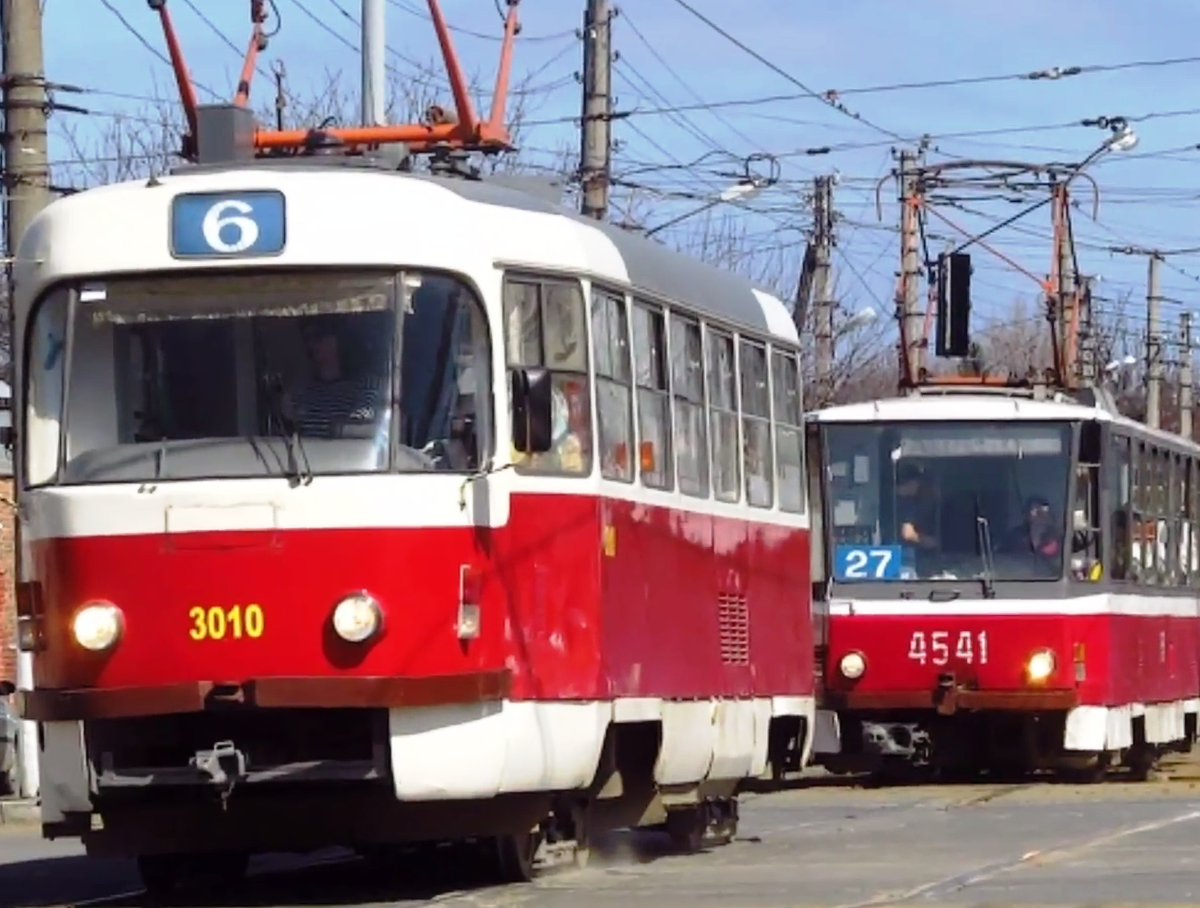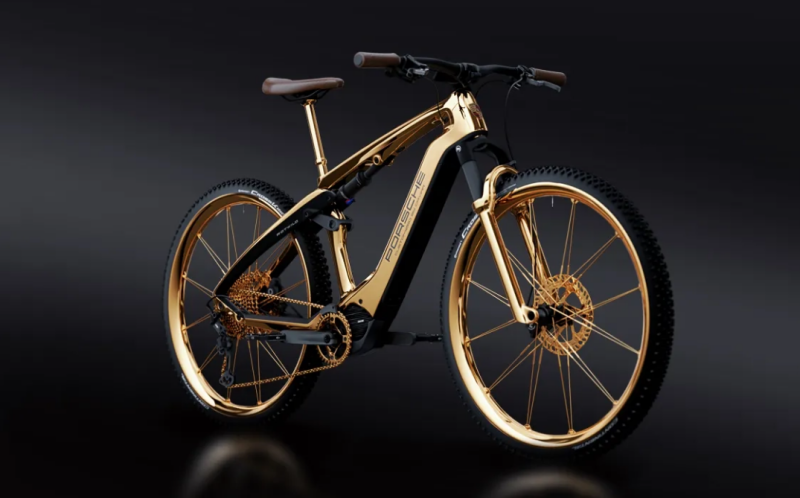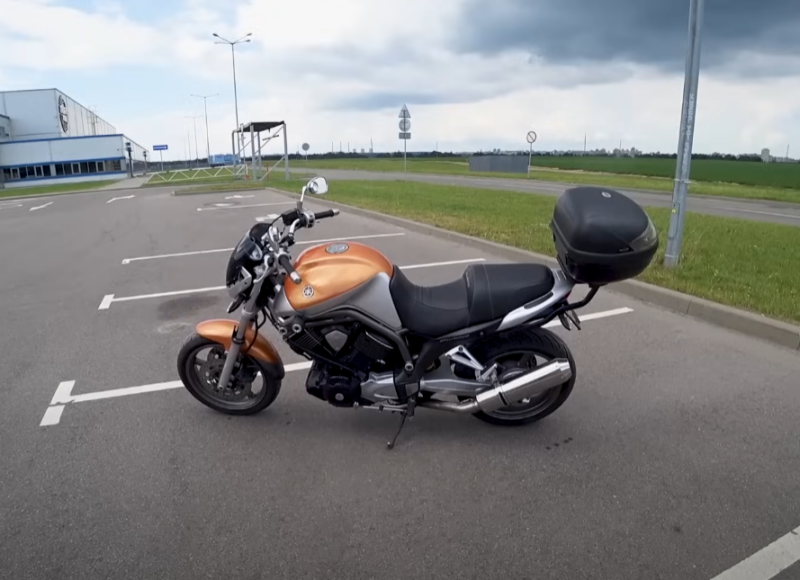Of course, the Czechs managed to achieve this, first of all, thanks to huge Soviet orders. And, also, the supply of trams to other socialist countries. The most popular modification of the wagons was the Tatra T3.
How Tatra T3 appeared
The first model of the plant was named Tatra T1 and appeared back in 1952. We immediately draw attention to the fact that, despite the complete similarity of the name, the tram has nothing to do with the multi-tonnage truck, which is no less popular in our country. Except, perhaps, the country of production.
Czechoslovak engineering was the most advanced among all the countries of the socialist camp. Therefore, it is not surprising that the production of many units in this industry, for the needs of the CMEA member states, was entrusted precisely to Czechoslovak enterprises. This is also true for the Tatra T3 tram.
 A familiar picture: Tatra T3 is moving along a provincial street. Photo: youtube.com
A familiar picture: Tatra T3 is moving along a provincial street. Photo: youtube.comHe replaced the Tatra T2. Moreover, the technical conditions stipulated that the new model should not be smaller in capacity or more technologically complex. And so it happened. If a limited amount of Tatra T3 was delivered to other countries, then in Czechoslovakia itself it was available in every city. The same can be said about three more countries that are not on the map today: the USSR, the GDR and Yugoslavia.
The release of the new model was launched in 1960 and lasted for almost 40 years. During this time, Tatra T3 became the most popular tram in major Soviet cities. Of the 14 self-propelled railcars produced by ČKD-Prague, 80% were exported to our country.
Trams made for the Soviet Union
Understanding the importance of the Soviet market as the main consumer, the Czechoslovak side was ready to adapt manufactured products to specific needs and operating conditions. So, in the period up to 1976, we received only two-door cars. This was necessary due to the presence of the conductor in the cabin. When this system was abolished, it became possible to purchase standard three-door designs.
So this rolling stock harmoniously fit into the image of many cities of the USSR and remained recognizable in the post-Soviet space. Despite the Spartan driving conditions, Tatra T3 has earned the trust of passengers and respect from drivers and repair teams.
 In the training car, the driver was even more cramped. Photo: youtube.com
In the training car, the driver was even more cramped. Photo: youtube.comSo that it could be operated in Soviet cities with a harsh climate, some improvements were made at the manufacturing plant. For example, the driver's cabin, instead of an elegant glass partition, was equipped with a deaf, made of solid materials. And the service ladder was transferred to the back door area. Yet, basically, the trams supplied to us were not much different from those that traveled along the cramped Czech streets.
But for other Eastern European countries, some design changes had to be made. For example, on cars made for Yugoslavia, the pantograph was moved to the area above the rear bogie. In Romania, it was necessary to take into account the difference in the traction network voltage (750 V instead of the usual 600). East Germany, in turn, practiced the operation of trains with two motor cars.
Technical characteristics of the tram
The main technical feature of the Tatra T3 can be considered the complete absence of pneumatic equipment. The mechanical part of the tram consists of body parts, the chassis of the car and the brake system. To this it is also worth adding auxiliary mechanical equipment: ventilation and heating systems.
Body parts are an all-metal structure that performs a load-bearing role. It includes a frame and stamped details of the roof and sides (frames). Sheets of metal sheathing are attached to them, in turn. Only the front and rear bow parts of the car are made of special fiberglass.
 Modest dashboard. Photo: youtube.com
Modest dashboard. Photo: youtube.comThe electrical equipment of the board includes the components of the electric heating of the tram, the cabin ventilation drive and the electronic power supply of the brake system. Its main part, of course, was considered a current collector. He acted as an intermediary between the contact network and the on-board electrical appliances listed above. The pantograph rods had contact tips made of aluminum alloy. Inserts from the same material and from coal were also used.
The characteristics of the Tatra T3 show that the designers managed to achieve the goal that was set for them at the beginning. The transport turned out with good parameters, capacity indicators and driving performance:
✅ tram length - 14 m
✅ width - 2,5 m
✅ height - 3 m
✅ electric motor power - 160 kW
✅ top speed - 65 km/h
Typically, TM22 engines were installed on machines of this model. There were four of them, with a capacity of 40 kW each. The dry weight of the vehicle was 16 tons, and the capacity was up to 110 people. The number of seats in this case was 23 or 36, depending on the modification.
Upgrade time
I think everyone understands that several decades of dense exploitation do not pass without a trace. Despite the demonstrated good survivability, Tatra T3 constantly needed to replace failed parts. Some components and systems are completely obsolete. Also, during operation in different weather and climatic conditions, a number of design flaws and blunders were identified. Everything spoke in favor of the fact that fundamental changes are needed for the further successful use of trams on city routes.
In order to improve the running characteristics of trams, their modernization began to be carried out everywhere. Most often, it included the following steps:
✅ engine replacement
✅ complete restoration of body parts
✅ reorganization and increase in the comfort of the cabin
✅ replacement of the control complex with a transistor type
Back in Soviet times, in such cities of our country as Moscow, Volgograd, Kyiv, Kharkov, etc., well-equipped bases for the repair and maintenance of urban rolling stock appeared. It became clear to many that it is much easier and cheaper to carry out timely maintenance and repair of existing trams, instead of buying expensive new equipment.
In the post-Soviet space, with the advent of commerce and the crisis of the 90s, this opinion has only strengthened. So the Moscow repair plant TRZ has been repairing Czech trams since 1998. During this time, a number of modernized models appeared: TMRP-1, MTTM, MTTA, MTTE, KT3R ("Cobra"), etc. They received their names depending on which machine unit was subjected to a radical alteration or replaced by a newer analogue.
 In the elegant lines of the Cobra, the familiar T3 is hardly recognizable. Photo: youtube.com
In the elegant lines of the Cobra, the familiar T3 is hardly recognizable. Photo: youtube.comThe Oryol TTP copes well with such tasks. Already five trams that were idle due to breakdowns, after a meeting with Oryol specialists, returned to service again. Now they have become more adapted to the current operating conditions, and their service life has been noticeably increased.
The order for the last eight trams for the Russian market was received by ČKD-Prague at the end of the XNUMXth century. Unfortunately, not all of them reached the end user. The reason was the economic difficulties of the Russian side. Now unclaimed units, after modernization, are used in various Czech cities.
Disadvantages of trams covered by their advantages
In addition to the already mentioned low comfort, the Tatra T3 has other disadvantages. For example, high floors, along with low windows. This creates inconvenience for both seated and, especially, standing passengers. The imperfection of the accelerator design, which sometimes leads to a sharp increase in the speed of movement or, on the contrary, braking. There is also a cramped driver's cabin and increased noise in the cabin, associated with the operation of a motor-generator.
 Soft salon. And there were plastic seats. Photo: youtube.com
Soft salon. And there were plastic seats. Photo: youtube.comSome of them have been eliminated in the course of numerous improvements to the design of the tram, others still remain. Despite this, the Tatra T3 is still considered one of the most successful models of urban rail transport and continues to be its main type in Russian and Czech cities. And, in general, throughout the post-Soviet space.










